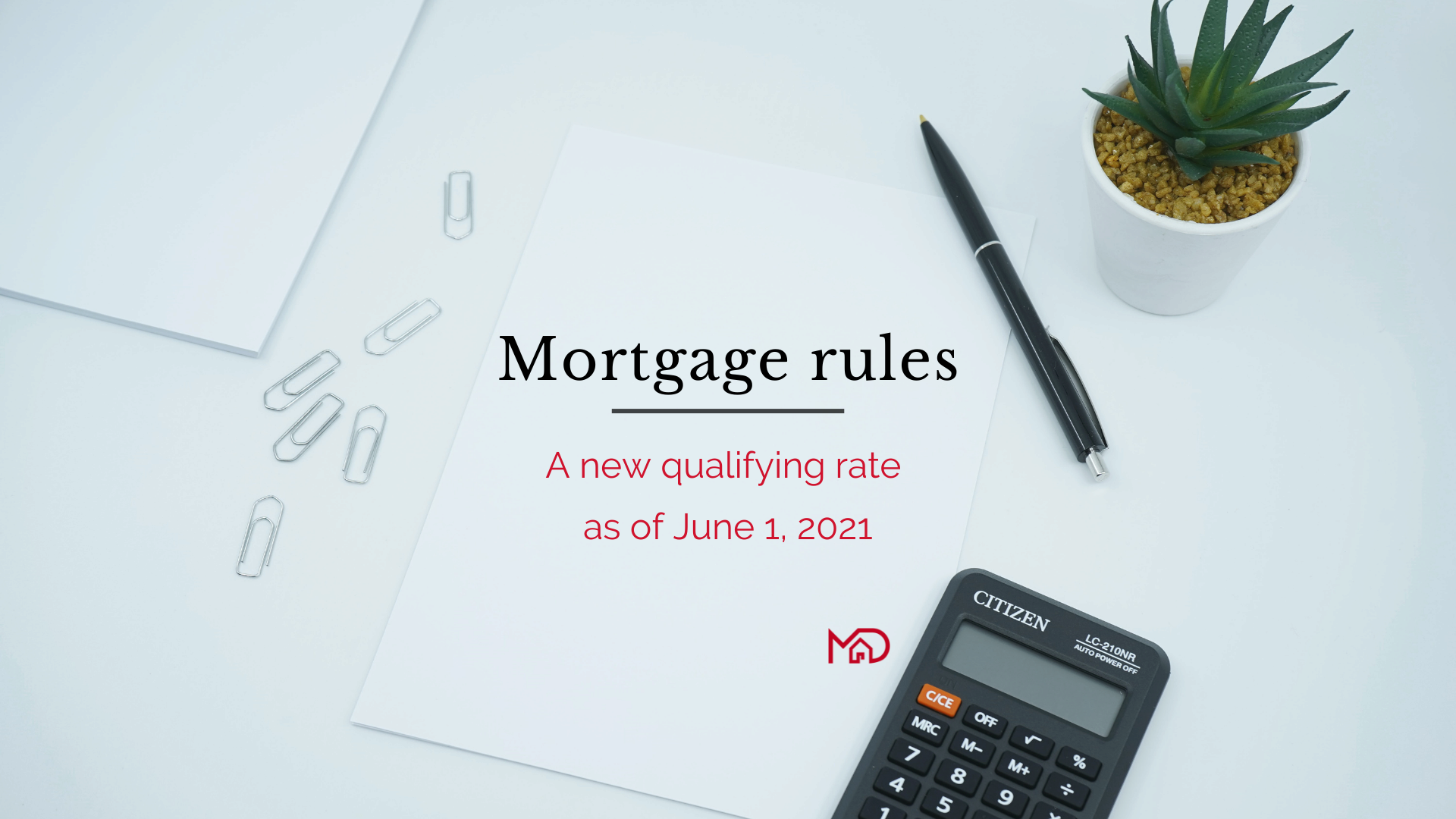Mortgage rules: A new qualifying rate
16 Jul 2021
As of June 1, 2021, following the announcement by Canadian authorities, financial institutions have tightened mortgage loan rules, both for insured and conventional loans, by increasing the qualification rate, also called the “stress test” from 4.79% to 5.25%.
What is the qualifying rate?
The qualification rate is a benchmark that your financial institution uses to determine the maximum amount it can lend you. It is important to know that the qualifying rate is not the actual rate you will pay, but rather it is the higher rate between the 5.25% benchmark rate or, for conventional loans, the contractual mortgage rate plus 2%.
What exactly does this mean for borrowers?
For households with lower incomes or with debt to repay, this could limit your borrowing capacity and force you to scale back your budget for buying a home.
Why these new mortgage rules?
Lenders want to ensure that you will still be able to make your mortgage payments if interest rates increase or if there is a recession to avoid putting you in a situation of over-indebtedness. If you do not pass the test, you will have to take out a smaller mortgage and reconsider your purchase plan.
What are your options if you don't qualify for a mortgage?
If you don’t pass the test, you’ll have to reduce the amount you need to borrow. You could consider a more modestly-priced home, one that requires cosmetic renovations and is therefore less expensive, or even think about moving to a neighbourhood a bit farther away from your first choice of location. You could also reduce your debt load, make a larger down payment if you can, get together with others to increase your purchasing ability or simply postpone your project until you can put more money aside.
What are the most common mistakes buyers make?
We spoke with mortgage brokers who unanimously agreed upon the most common mistakes to avoid before applying for mortgage approval. Here are some of the tips they shared:
- Now is not the time to quit your stable job and become self-employed. To be considered by most financial institutions, you must be able to show at least 2 years of income history as a self-employed worker.
- Be careful not to take on more debt. For example, don’t buy or lease a new car, or make a major purchase on credit, like a new patio set or a swimming pool.
- Above all, don’t do account transfers so that you have all your funds in one place: funds must remain in the same account for at least 90 business days.
Tips for choosing the right mortgage advisor

Before you even start the process to make a new real estate purchase or refinance an existing one, it’s a good idea to contact your mortgage advisor, not only to find out how much you can borrow, but also to guarantee your rate. Mortgage pre-approval is free, so there's nothing stopping you from shopping around different financial institutions to find the one that best suits your situation.
Beyond the loan amount, there are a host of terms that can be more advantageous to you, depending on your personal situation, and nothing beats a great business relationship. So choosing an attentive and efficient mortgage broker will make all the difference.
It's important to know that not all financial institutions calculate debt ratios in the same way. Some consider 100% of rental income while others consider only 50%. For some, family allowances are calculated in household income, so if you are a large family with modest wages, this can be to your advantage. Your family or professional situation may change and this may affect your eligibility for a mortgage loan, for example, if you recently changed jobs or became self-employed.
Either way, your best bet is to discuss it with a qualified mortgage advisor as soon as possible. Do you need references? We can put you in touch with our trusted partners. Just call us at 514-388-9333 or email us.
What is the difference between an insured loan and a conventional loan?
An insured loan is a mortgage for which you make a down payment of less than 20% of the value of the property. Insurers like the Canada Mortgage and Housing Corporation (CMHC), SAGEN (formerly known as Genworth) or Canada Guaranty will insure the loan if the buyer defaults. If a buyer makes a down payment of 20% or more, they don't have to insure their loan, so it’s a conventional loan. When we talk about the value of the property, we are not always referring to the purchase price, but rather the bank’s assessment of the property. In a multiple bid situation, where the sale price exceeds the advertised price, sometimes the financial institution will assess the value of the property below the price you paid. This has a direct impact on your borrowing capacity, and therefore, you may have to increase your down payment or switch from a conventional loan to an insured loan.
How much should you put down on a property?
Owner occupant | Non-occupying owner | |
| Single-family, divided condo and duplex | 5% insured for the first $500,000 + 10% for the remaining balance 20% uninsured | 20% |
Undivided condo | 20% with the financial institution of the building | Not possible |
Triplex - Fourplex | 10% insured 20% uninsured | 20% |
Multiplex 5 units and more | 15% insured (of the economic value of the property) 25% uninsured | Idem |
Are you ready to make the move and buy a property? Call us at 514-388-9333 or email us to make an appointment.

By Celina Machado, Marketing Director and Residential Real Estate Broker, Martin Dumont Real Estate Team
Last update July 2021
